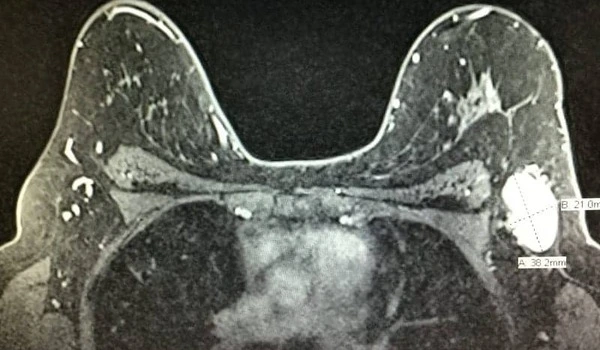Early disease identification is seen positively; but, what if it uncovers “too much”? While early diagnosis can increase the odds of recovery, it can also have unintended consequences. After all, not everything discovered would have proven potentially fatal along the course of the disease. TOSYMA, the world’s largest randomized diagnostic superiority study on early breast cancer detection, has now investigated whether the innovative DBT+SM method for early breast cancer detection has the same effect – and was once again able to hint at advantages of the approach over the screening standard by detecting more early tumor stages of tumor grades 2 and 3.
In diagnostics, finding more is not always better. Rather, it is about doing the right thing, particularly in the case of such deadly conditions as cancer. This is where early detection comes in, but it can also have unintended consequences. For example, there is a risk of discovering non-aggressive tumors that require treatment but do not significantly impair quality of life or become life-threatening during the course of the disease.
Medicine speaks of overdiagnosis. TOSYMA is also about early detection: the world’s largest randomized — i.e. randomly assigned — diagnostic superiority study for the early detection of breast cancer has set itself the task of investigating and improving the systematic early detection of invasive breast cancer. The researchers at the University of Münster, who are managing the mammoth project, have now published new results on TOSYMA in the highly-ranked journal Radiology. These demonstrate the advantages of the innovative diagnostic approach.
From the results of the subanalysis, we conclude that the higher rate of early tumor stages of tumor grades 2 and 3 through the use of DBT+SM could increase the screening effect with regard to breast cancer mortality.
Prof. Stefanie Weigel
A combination of DBT — short for Digital Breast Tomosynthesis — and Synthetic 2D Mammography (SM) was used for the almost 100,000 TOSYMA study participants. The interdisciplinary study group led by Prof. Walter Heindel, Director of the Clinic for Radiology at the University Hospital Münster, compared the data obtained with the combined procedure — known as DBT+SM — with that from conventional screening with digital mammography (DM).
The result: DBT+SM leads to the detection of significantly more invasive breast cancers compared to the conventional DM procedure. However, this does not necessarily mean that women’s health is improved – the keyword here is overdiagnosis. In other words, it has been shown that DBT+SM “finds” breast cancer better – but the task now was to investigate whether this can be expected to actually lead to an improvement for the affected breast cancer patients.

In an exploratory subanalysis, Prof. Stefanie Weigel, Prof. Walter Heindel, and Prof. Hans-Werner Hense examined which tumors are frequently detected at an earlier stage of breast cancer – and found that DBT+SM screening can detect relevant tumors, i.e. those that — in contrast to less aggressive variants – are potentially relevant for a reduction in breast cancer mortality. Prof. Stefanie Weigel concludes: “From the results of the subanalysis, we conclude that the higher rate of early tumor stages of tumor grades 2 and 3 through the use of DBT+SM could increase the screening effect with regard to breast cancer mortality” – another “plus point” for DBT+SM.
The next phase is already underway: this year, data from the North Rhine-Westphalia and Lower Saxony cancer registries will be assessed for follow-up in order to further investigate the screening effect of DBT+SM compared to the prior screening standard. The TOSYMA initiative, which began in 2016, has 17 screening facilities in Germany and is financially supported by the German Research Foundation. The current funding cycle lasts until 2025.





